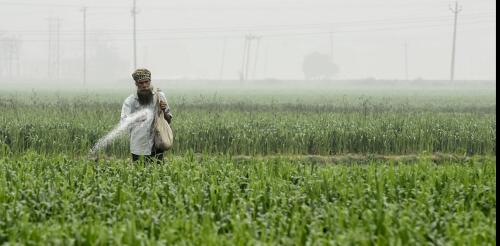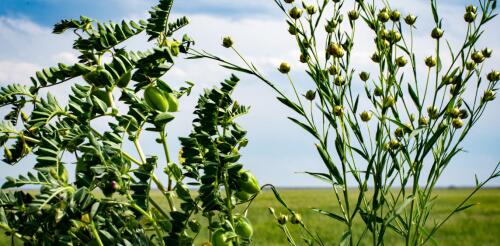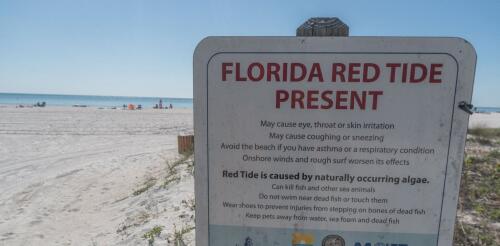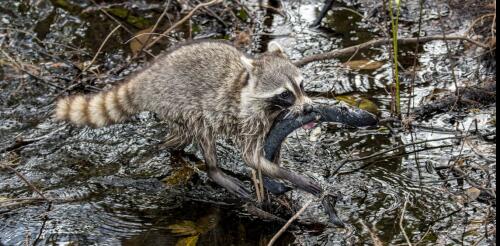Nutrient pollution
Feeding a growing world population has been a serious concern for decades, but today there are new causes for alarm. Floods, heat waves and other weather extremes are making agriculture increasingly precarious, especially in the Global South. The war in Ukraine is also a factor. Russia is blockading Ukrainian grain exports, and fertilizer prices have surged because of trade sanctions on Russia, the world’s leading fertilizer exporter. Amid these challenges, some organizations are renewing calls for a second Green Revolution, echoing the introduction in the 1960s and 1970s of supposedly high-yielding varieties of wheat and rice into developing countries, along with synthetic fertilizers and pesticides. Those efforts centered on India and other Asian countries; today, advocates focus on sub-Saharan Africa, where the original Green Revolution regime never took hold. In this Oct. 25, 2000, episode of the television drama ‘The West Wing,’...
Humans have physically reconfigured half of the world’s land to grow just eight staple crops: maize (corn), soy, wheat, rice, cassava, sorghum, sweet potato and potato. They account for the vast majority of calories that people around the world consume. As global population rises, there’s pressure to expand production even further. Many experts argue that further expanding modern industrialized agriculture – which relies heavily on synthetic fertilizer, chemical pesticides and high-yield seeds – isn’t the right way to feed a growing world population. In their view, this approach isn’t sustainable ecologically or economically, and farmers and scientists alike feel trapped within this system. Corn’s evolution into a global commodity shows how industrialized agriculture has transformed farming. How can societies develop a food system that meets their needs and is also more healthy and diverse? It has p...
Plunging into the ocean or a lake is one of the great joys of summer. But arriving at the beach to find water that’s green, red or brown, and possibly foul-smelling, can instantly spoil the party. As a toxicologist, I study health risks from both synthetic and natural substances. I’ve conducted research into early detection of harmful algal blooms, or HABs, which are an increasing threat to humans, animals and the environment. Toxins produced during these blooms have been implicated in human and animal illnesses in at least 43 states. Scientists have estimated that in the U.S. alone, freshwater HABs cause more than US$4.6 billion in damage yearly. Here’s what to know about them if you’re bound for the water’s edge this summer. Harmful algal blooms have become a regular occurrence along large stretches of Florida’s coast in recent years. Tiny organisms, big impacts Algae and cyanobacteria – often...
An unwelcome visitor is headed for Florida and the Caribbean: huge floating mats of sargassum, or free-floating brown seaweed. Nearly every year since 2011, sargassum has inundated Caribbean, Gulf of Mexico and Florida coastlines in warm months, peaking in June and July. This brown tide rots on the beach, driving away tourists, harming local fishing industries and requiring costly cleanups. According to scientists who monitor the formation of sargassum in the Atlantic Ocean, 2023 could produce the largest bloom ever recorded. That’s bad news for destinations like Miami and Fort Lauderdale that will struggle to clean their shorelines. In 2022, Miami-Dade County spent US$6 million to clear sargassum from just four popular beaches. Satellite image of sargassum concentrations in the Atlantic during the month of March. USF/NOAA, CC BY-ND Sargassum isn’t new on South Florida beaches, but its r...
Wetlands are areas of land that are covered by water, or have flooded or waterlogged soils. They can have water on them either permanently or for just part of the year. Whether it’s year-round or seasonal, this period of water saturation produces hydric soils, which contain little or no oxygen. But this doesn’t mean that they are lifeless: Wetlands are full of unique water-loving plants and wildlife that have adapted to wet environments. Wetlands can take many different forms, depending on the local climate, water conditions and land forms and features. For example, swamps are dominated by woody trees or shrubs. Marshes often have more grasslike plants, such as cattails and bulrushes. Bogs and fens are areas that accumulate peat – deposits of dead and partly decomposed plant materials that form organic-rich soil. Trillions of dollars in ecological benefits Wetlands are important environments for many reasons. They provide ecological services whose value has...




